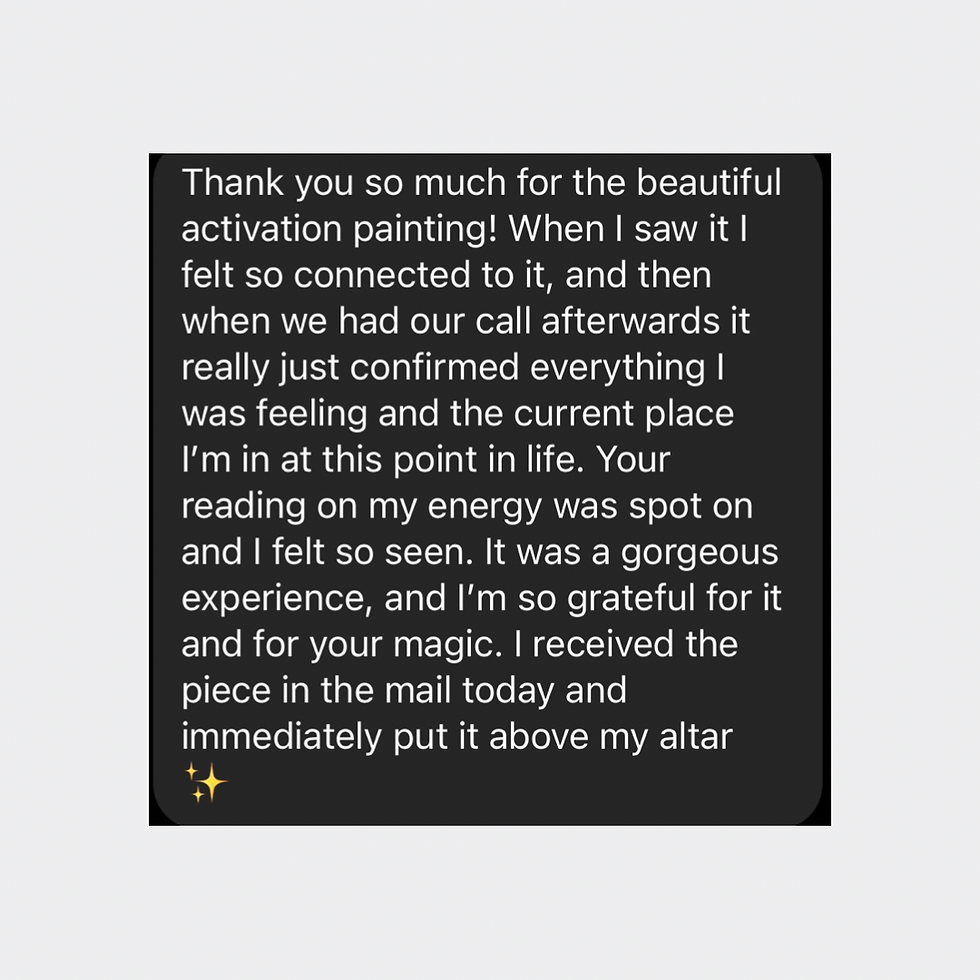- Deanna Imfeld
- May 1, 2022
- 2 min read

I wanted to offer a way for everyone to build their own activations without necessarily booking with me, so this idea came to me.
The best way to connect with a new version of self, or to build new habits, or to call something in, is to boil the idea down to a sensation and choose to step into that sensation as often as you can in the present moment.
If you are calling in abundance, what is the sensation of abundance for you? Is it safety? Then what are actions you can do right now, that make you feel the sensation of safety? Is it confidence? How can you embody that sensation of confidence right now?
When we focus on the sensation of what we are desiring, it takes that thing off the pedestal and into our current state. We can choose to step into that sensation at any time. And since we can choose to be in that sensation, then we are already sitting in the very thing that we desire. It is moving our vessel into a space where that sensation is familiar, so it is easier to hold when the opportunity opens up to receive it.
The best way I move into those sensations is through visuals. That's why I create activation paintings. That's why I want to create ways to activate these sensations within us, so we can step into those desires, right now.
Fuck divine timing, you can have what you desire in this moment. Because everything is just a sensation and you can choose to feel it at any point.
So this guide is just a three-step guide on how to build your own totem. There is a link to a template in Canva as well. Or you can download the template here:

I use Canva, and use an IG story size so that I can put them on my phone as a wallpaper. But, you can also make these using magazine photos or your own. You can make a collage if you want to hang it up in your room.
The key to building this is your intention and your belief. As long as you hold your intention and trust as you build this, you will feel the shift in your experience.
Have fun building your embodiment totem and be sure to tag me @_talularose when you make it :D
*P.S. focus on one embodiment totem for at least 30 days before you make a bunch*
For More
Subscribe to my newsletter: https://talula.substack.com/
To take your embodiment practice deeper, book a custom activation painting:







